Opinion & Analysis
Hunt: Breaking down the best players on tour by category
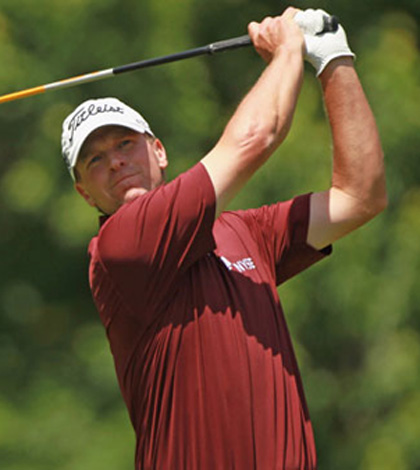
I’m often asked by my readers what current PGA Tour player’s game I would prefer to have based upon my statistical research. To answer their question, I decided to look at the data and split the game into certain key metrics and base it upon a Tour player’s history. Hopefully for those at home, this will get people pointed in the right direction as to which players to observe when it comes to certain categories of the game.
DRIVING THE BALL
Variables to consider:
- Driving distance.
- Fairway percentage.
- Average distance from the edge of the fairway.
- Percent of times in a fairway bunker.
- “Missed Fairway — Other.”
Based on those variables, I use an algorithm that determines how effectively a player drives the ball. I call it “driving effectiveness.”
I also consider how well a golfer drives the ball off the tee when he is not hitting his driver. Looking at ShotLink data, I can tell you that most golfers would be surprised how many Tour players struggle hitting a 3 wood off the tee. We also have to consider ball height as in general, as high ball hitters have statistically fitted into today’s modern courses. I believe this is because the modern TPC courses are filled with forced carries.
With that, I would pick Boo Weekley, who has finished in my top 10 in Driving Effectiveness in each of the last three seasons. He’s one of the best fairway wood players in the game as well. He hits it long, accurate and precise.
Honorable Mention: Keegan Bradley, Graeme McDowell, Hunter Mahan, Graham DeLaet
Top Newcomer: Jordan Spieth
BIRDIE ZONE PLAY (75 to 125 YARDS)
Birdie Zone play (along with the rest of the zones) is based on the player’s average proximity to the cup. What I have generally found is that the golfers who perform best from the Birdie Zone tend to have less forward shaft lean at impact. There are some players who are usually very good Birdie Zone players such as Sergio Garcia. This makes me believe that Birdie Zone play is more about controlling the shaft lean and that the players with less forward shaft lean tend to do the best job of controlling it.
There are quite a few players on Tour that consistently perform well in the Birdie Zone, but I would pick Steve Stricker above them all based on his performance over the years.
Honorable Mention: Brian Gay, Camilo Villegas, Charlie Wi, Luke Donald, Charl Schwartzel
Top Newcomer: Paul Haley II
SAFE ZONE PLAY (125 to 175 YARDS)
The Safe Zone consists of short and mid irons for Tour players. It is also the zone where the most frequent amount of approach shot happens.
There are generally three ways to become extremely good in the Safe Zone:
- Keep the drive in the fairway a high percentage of time (80-plus percent).
- Become an excellent player out of the rough.
- Be a superior irons player from this distance.
For this article, I’m more concerned with the golfer’s pure ability to hit shots from this distance instead of the golfer who consistently keeps his ball in the fairway and ends up having an easier approach shot into the green than the golfer who is hitting shots out of the rough.
Out of all of the players, I would give this to Bud Cauley, as he has been excellent the past two years from the Safe Zone, whether he is hitting it from the fairway or the rough.
Honorable Mention: Lee Westwood, Tim Clark, Luke Donald, Ken Duke, Rory Sabbatini
Top Newcomer: Jordan Spieth
DANGER ZONE PLAY (175 to 225 YARDS)
There is a misconception that long hitters or excellent drivers of the ball goes hand in hand with good Danger Zone play. The assumption is that a long hitter will be hitting shorter clubs into the hole, and therefore has an easier shot. While that is true, he still has to be able to hit the ball well even if he has a shorter club. And there are plenty of excellent drivers of the ball that cannot hit it from the Danger Zone (i.e. Blake Adams, John Rollins and Bill Haas). Conversely, there are excellent Danger Zones that are terrible drivers of the ball (Mickelson, Romero and Michael Thompson).
One way to “cheat the system” is for players to keep the ball in the fairway when they are in the Danger Zone. I recommend this for ALL golfers when they are facing a very long par 4. Focus on finding the fairway with your driver instead of trying to swing harder in hopes of gaining a few yards.
Like the Safe Zone, I’m more interested in a “pure Danger Zone player” than one who smartly finds the fairway here repeatedly. That’s why I take Robert Garrigus. Most of the longer hitters on Tour hit very few of their Danger Zone shots from the rough because they usually are rarely in the Danger Zone on long par 4’s. Instead, they are usually hitting these Danger Zone shots from the tee box on par 3’s.
Garrigus is one of the exceptions, and he does hit quite a few Danger Zone shots from the rough, which indicates he is fairly conservative off the tee. However, he’s continually one of the best on Tour from the Danger Zone and is ranked first, by a long shot, from the Danger Zone this season.
Honorable Mention: Jim Furyk, David Toms, Boo Weekley, Phil Mickelson, Tiger Woods
Top Newcomer: D.H. Lee
225 to 275 YARDS ZONE
This zone is what I call a “volatile” metric, meaning that players rarely perform well from here year after year. One year a player may be one of the best on Tour and then the next year they may be one of the worst. We start to see this distance favoring longer hitters a little more noticeably.
It’s hard to argue against Tiger, since no one has hit more clutch shots from this distance than he has over the years.
Honorable Mention: Gary Woodland, George McNeill, Boo Weekley, Scott Stallings, Michael Thompson
Top Newcomer: Morgan Hoffmann
SHOTS FROM THE ROUGH
Shots from the rough are a bit difficult to quantify because rough tends to get longer as the ball is hit farther away from the fairway. While the data suggests that shots from the rough favor players who generate more club head speed, there are plenty of players with less club head speeds that play well from the rough. But, the issue may be that those lower club head speed players are keeping the ball closer to the edge of the fairway and are hitting from shorter rough grass.
Typically, Sergio Garcia has been one of the very best players from the rough over the years. However, I would take Mickelson, who has been practically as good. And if there was ever a golfer I needed to hit an impossible shot from the rough, it would be Lefty.
Honorable Mention: Sergio Garcia, Chris Couch, Dustin Johnson, Jonathan Byrd, Ken Duke
Top Newcomer: Morgan Hoffmann
SHOTS FROM THE FAIRWAY
Shots from the fairway actually have a far greater correlation to a golfer’s success on Tour than shots from the rough. That’s because most of their approach shots come from the fairway or the tee box. Therefore, shots from the fairway do not favor any style of play other than quality ballstrikers.
For my money, I would take Steve Stricker in a Big Break style contest if every shot was from the short grass. Stricker also finished first in my Shots from the Fairway metric in 2012.
Honorable Mention: Jeff Maggert, Jim Furyk, Rory McIlroy, Webb Simpson, Tiger Woods
Top Newcomer: Brian Stuard
PLAYING IN WINDY CONDITIONS
I have been doing some preliminary research on playing into the wind. From what I have researched thus far, it tends to favor golfers whom have a downward attack angle with the driver and are very good from the Birdie Zone. My initial thoughts is that the downward attack angle keeps the ball low, which makes them more comfortable in the wind. I think the Birdie Zone play has to do with having more Birdie Zone shots on the par 5’s and thus, the better wedge players can convert birdies on those holes.
My initial research shows that the best player in windy conditions (13-plus mph winds) is Charl Schwartzel.
Honorable mention: Tiger Woods, Boo Weekley, Chris Stroud, John Merrick, Trevor Immelman
Top Newcomer: N/A
SHORT GAME PLAY (LESS THAN 20 YARDS)
Part of short game play is not only the golfer’s skill around the green, but where they leave their approach shots. It is impossible to decipher where exactly the approach shots are left. That would make a strong case for Mickelson. But, I will go with Chris Riley, who has consistently been a top-5 player in Short Game play for years.
Honorable Mention: Phil Mickelson, Brian Gay, Charlie Wi, Ian Poulter, Jerry Kelly
Top Newcomer: James Hahn
PUTTING
This is based off the metric “Putts Gained.” The research has shown that putts from 3 to 15 feet have the largest correlation to Putts Gained performance. This is in part because putts made from longer than 15 feet are a volatile metric. In fact, the average Tour player makes one birdie putt from longer than 25 feet every 98 holes they play. As I have discussed here before, going low on Tour is about getting the ball inside 15 feet to the hole for birdie on a consistent basis — it is not about making a lot of bombs.
There are a lot of terrific putters on Tour. But, the one player who has stood out has been Luke Donald. Donald ranked first in Putts Gained in 2010, 2011 and 2012. He “slipped” last year falling to third in the metric.
Honorable Mention: Greg Chalmers, Aaron Baddeley, Tiger Woods, Bryce Molder, Brian Gay
Top Newcomer: Russell Henley
Opinion & Analysis
The 2 primary challenges golf equipment companies face

As the editor-in-chief of this website and an observer of the GolfWRX forums and other online golf equipment discourse for over a decade, I’m pretty well attuned to the grunts and grumbles of a significant portion of the golf equipment purchasing spectrum. And before you accuse me of lording above all in some digital ivory tower, I’d like to offer that I worked at golf courses (public and private) for years prior to picking up my pen, so I’m well-versed in the non-degenerate golf equipment consumers out there. I touched (green)grass (retail)!
Complaints about the ills of and related to the OEMs usually follow some version of: Product cycles are too short for real innovation, tour equipment isn’t the same as retail (which is largely not true, by the way), too much is invested in marketing and not enough in R&D, top staffer X hasn’t even put the new driver in play, so it’s obviously not superior to the previous generation, prices are too high, and on and on.
Without digging into the merits of any of these claims, which I believe are mostly red herrings, I’d like to bring into view of our rangefinder what I believe to be the two primary difficulties golf equipment companies face.
One: As Terry Koehler, back when he was the CEO of Ben Hogan, told me at the time of the Ft Worth irons launch, if you can’t regularly hit the golf ball in a coin-sized area in the middle of the face, there’s not a ton that iron technology can do for you. Now, this is less true now with respect to irons than when he said it, and is less and less true by degrees as the clubs get larger (utilities, fairways, hybrids, drivers), but there remains a great deal of golf equipment truth in that statement. Think about it — which is to say, in TL;DR fashion, get lessons from a qualified instructor who will teach you about the fundamentals of repeatable impact and how the golf swing works, not just offer band-aid fixes. If you can’t repeatably deliver the golf club to the golf ball in something resembling the manner it was designed for, how can you expect to be getting the most out of the club — put another way, the maximum value from your investment?
Similarly, game improvement equipment can only improve your game if you game it. In other words, get fit for the clubs you ought to be playing rather than filling the bag with the ones you wish you could hit or used to be able to hit. Of course, don’t do this if you don’t care about performance and just want to hit a forged blade while playing off an 18 handicap. That’s absolutely fine. There were plenty of members in clubs back in the day playing Hogan Apex or Mizuno MP-32 irons who had no business doing so from a ballstriking standpoint, but they enjoyed their look, feel, and complementary qualities to their Gatsby hats and cashmere sweaters. Do what brings you a measure of joy in this maddening game.
Now, the second issue. This is not a plea for non-conforming equipment; rather, it is a statement of fact. USGA/R&A limits on every facet of golf equipment are detrimental to golf equipment manufacturers. Sure, you know this, but do you think about it as it applies to almost every element of equipment? A 500cc driver would be inherently more forgiving than a 460cc, as one with a COR measurement in excess of 0.83. 50-inch shafts. Box grooves. And on and on.
Would fewer regulations be objectively bad for the game? Would this erode its soul? Fortunately, that’s beside the point of this exercise, which is merely to point out the facts. The fact, in this case, is that equipment restrictions and regulations are the slaughterbench of an abundance of innovation in the golf equipment space. Is this for the best? Well, now I’ve asked the question twice and might as well give a partial response, I guess my answer to that would be, “It depends on what type of golf you’re playing and who you’re playing it with.”
For my part, I don’t mind embarrassing myself with vintage blades and persimmons chasing after the quasi-spiritual elevation of a well-struck shot, but that’s just me. Plenty of folks don’t give a damn if their grooves are conforming. Plenty of folks think the folks in Liberty Corner ought to add a prison to the museum for such offences. And those are just a few of the considerations for the amateur game — which doesn’t get inside the gallery ropes of the pro game…
Different strokes in the game of golf, in my humble opinion.
Anyway, I believe equipment company engineers are genuinely trying to build better equipment year over year. The marketing departments are trying to find ways to make this equipment appeal to the broadest segment of the golf market possible. All of this against (1) the backdrop of — at least for now — firm product cycles. And golfers who, with their ~15 average handicap (men), for the most part, are not striping the golf ball like Tiger in his prime and seem to have less and less time year over year to practice and improve. (2) Regulations that massively restrict what they’re able to do…
That’s the landscape as I see it and the real headwinds for golf equipment companies. No doubt, there’s more I haven’t considered, but I think the previous is a better — and better faith — point of departure when formulating any serious commentary on the golf equipment world than some of the more cynical and conspiratorial takes I hear.
Agree? Disagree? Think I’m worthy of an Adam Hadwin-esque security guard tackle? Let me know in the comments.
@golfoncbs The infamous Adam Hadwin tackle ? #golf #fyp #canada #pgatour #adamhadwin ? Ghibli-style nostalgic waltz – MaSssuguMusic
Podcasts
Fore Love of Golf: Introducing a new club concept

Episode #16 brings us Cliff McKinney. Cliff is the founder of Old Charlie Golf Club, a new club, and concept, to be built in the Florida panhandle. The model is quite interesting and aims to make great, private golf more affordable. We hope you enjoy the show!
Opinion & Analysis
On Scottie Scheffler wondering ‘What’s the point of winning?’

Last week, I came across a reel from BBC Sport on Instagram featuring Scottie Scheffler speaking to the media ahead of The Open at Royal Portrush. In it, he shared that he often wonders what the point is of wanting to win tournaments so badly — especially when he knows, deep down, that it doesn’t lead to a truly fulfilling life.
View this post on Instagram
“Is it great to be able to win tournaments and to accomplish the things I have in the game of golf? Yeah, it brings tears to my eyes just to think about it because I’ve literally worked my entire life to be good at this sport,” Scheffler said. “To have that kind of sense of accomplishment, I think, is a pretty cool feeling. To get to live out your dreams is very special, but at the end of the day, I’m not out here to inspire the next generation of golfers. I’m not out here to inspire someone to be the best player in the world, because what’s the point?”
Ironically — or perhaps perfectly — he went on to win the claret jug.
That question — what’s the point of winning? — cuts straight to the heart of the human journey.
As someone who’s spent over two decades in the trenches of professional golf, and in deep study of the mental, emotional, and spiritual dimensions of the game, I see Scottie’s inner conflict as a sign of soul evolution in motion.
I came to golf late. I wasn’t a junior standout or college All-American. At 27, I left a steady corporate job to see if I could be on the PGA Tour starting as a 14-handicap, average-length hitter. Over the years, my journey has been defined less by trophies and more by the relentless effort to navigate the deeply inequitable and gated system of professional golf — an effort that ultimately turned inward and helped me evolve as both a golfer and a person.
One perspective that helped me make sense of this inner dissonance around competition and our culture’s tendency to overvalue winning is the idea of soul evolution.
The University of Virginia’s Division of Perceptual Studies has done extensive research on reincarnation, and Netflix’s Surviving Death (Episode 6) explores the topic, too. Whether you take it literally or metaphorically, the idea that we’re on a long arc of growth — from beginner to sage elder — offers a profound perspective.
If you accept the premise literally, then terms like “young soul” and “old soul” start to hold meaning. However, even if we set the word “soul” aside, it’s easy to see that different levels of life experience produce different worldviews.
Newer souls — or people in earlier stages of their development — may be curious and kind but still lack discernment or depth. There is a naivety, and they don’t yet question as deeply, tending to see things in black and white, partly because certainty feels safer than confronting the unknown.
As we gain more experience, we begin to experiment. We test limits. We chase extreme external goals — sometimes at the expense of health, relationships, or inner peace — still operating from hunger, ambition, and the fragility of the ego.
It’s a necessary stage, but often a turbulent and unfulfilling one.
David Duval fell off the map after reaching World No. 1. Bubba Watson had his own “Is this it?” moment with his caddie, Ted Scott, after winning the Masters.
In Aaron Rodgers: Enigma, reflecting on his 2011 Super Bowl win, Rodgers said:
“Now I’ve accomplished the only thing that I really, really wanted to do in my life. Now what? I was like, ‘Did I aim at the wrong thing? Did I spend too much time thinking about stuff that ultimately doesn’t give you true happiness?’”
Jim Carrey once said, “I think everybody should get rich and famous and do everything they ever dreamed of so they can see that it’s not the answer.”
Eventually, though, something shifts.
We begin to see in shades of gray. Winning, dominating, accumulating—these pursuits lose their shine. The rewards feel more fleeting. Living in a constant state of fight-or-flight makes us feel alive, yes, but not happy and joyful.
Compassion begins to replace ambition. Love, presence, and gratitude become more fulfilling than status, profits, or trophies. We crave balance over burnout. Collaboration over competition. Meaning over metrics.
Interestingly, if we zoom out, we can apply this same model to nations and cultures. Countries, like people, have a collective “soul stage” made up of the individuals within them.
Take the United States, for example. I’d place it as a mid-level soul: highly competitive and deeply driven, but still learning emotional maturity. Still uncomfortable with nuance. Still believing that more is always better. Despite its global wins, the U.S. currently ranks just 23rd in happiness (as of 2025). You might liken it to a gifted teenager—bold, eager, and ambitious, but angsty and still figuring out how to live well and in balance. As much as a parent wants to protect their child, sometimes the child has to make their own mistakes to truly grow.
So when Scottie Scheffler wonders what the point of winning is, I don’t see someone losing strength.
I see someone evolving.
He’s beginning to look beyond the leaderboard. Beyond metrics of success that carry a lower vibration. And yet, in a poetic twist, Scheffler did go on to win The Open. But that only reinforces the point: even at the pinnacle, the question remains. And if more of us in the golf and sports world — and in U.S. culture at large — started asking similar questions, we might discover that the more meaningful trophy isn’t about accumulating or beating others at all costs.
It’s about awakening and evolving to something more than winning could ever promise.

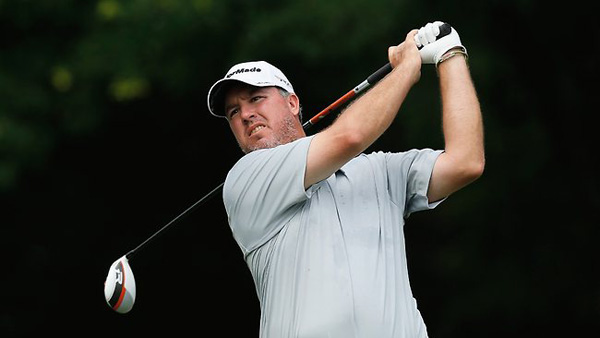










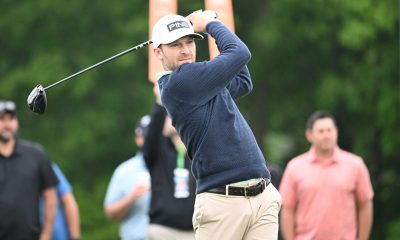

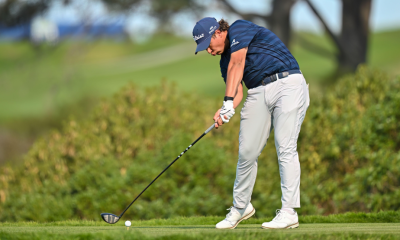

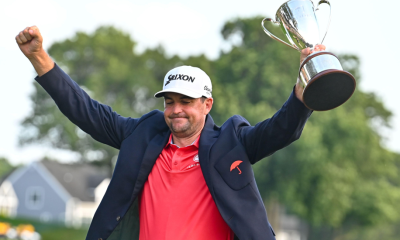



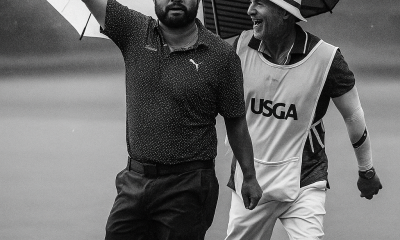

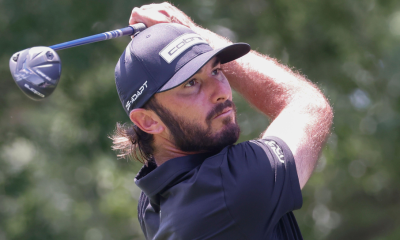









B MAC
Jul 13, 2013 at 3:36 am
Putting brandt snedeker ??
Richie Hunt
Jul 22, 2013 at 10:37 am
I agree. He’s one of the best on Tour. I would still take Luke Donald over him because that’s how incredible of a putter Luke Donald is.
wayne defrancesco
Jul 10, 2013 at 9:38 pm
You mention that from 75 to 125 yards players with less forward shaft lean tend to be better. Less than what? Poor players tend to have none, and so I end up teaching them to get as much as possible. What are the extremes? What is too much and what is optimum? What is the average for all players and what is Stricker’s average? What do you suggest as a goal? Is it different for different types of grass? Do it change for uneven lies?
As you can see, there are a lot of interesting questions when it comes to forward shaft lean. Rather than saying “less is better” it might be more instructive to be more detailed.
John
Jul 13, 2013 at 9:09 pm
I think he’s refereeing to your typical good ballstriker, people who can get around a course wit short g
Ame dictating score, not your average bloke who’s struggling to hit a 9 iron onto a green.
Richie Hunt
Jul 22, 2013 at 10:35 am
Wayne,
I try to stay away from actual instruction when doing these columns. I feel that is something best left to the professionals like yourself.
My comment was in regards to Tour players. The better Birdie Zone players tend to have less forward shaft lean at impact compared to the Tour as a whole. There are some players like Sergio that do quite well from this distance. However, Sergio has shown a lack of consistency from this distance over the years. Some year’s he’s great, other years he’s poor.
From the BZ for Tour players, it’s really all about distance control. When Tour players hits shots from longer distances, we start to see golfers with more forward shaft lean at impact doing better in these categories.
That’s why I tend to believe that BZ play is really about controlling the lean and there appears to be a correlation between players with less shaft lean on Tour and their ability to control that lean.
Obviously, your 20 handicap can likely use more forward shaft lean in general. But, if you have a 5 handicap that has major distance control issues with a wedge in their hand, they may want to develop a wedge swing where they have less forward shaft lean to help remedy that issue.
Tom Miller
Jul 9, 2013 at 10:53 pm
Next year you should add bunker shots / sand saves.
Richie Hunt
Jul 10, 2013 at 8:59 am
Thanks guys.
Tom – I wanted to do bunker shots, but the Tour’s recording of bunker shots is too vague for my tastes. I don’t like Sand Save % as a metric because it doesn’t really tell us if the golfer is a good bunker player or if they are a good putter.
They do have proximity to the cup from the sand, but it is for ALL greenside bunker shots. The problem is that the distances on those bunker shots can vary. So a golfer who is hitting it closer may be doing so because they have a shorter shot to begin with.
I have followed 20 different players for a project I’m doing throughout the year on Shot Tracker. From the limited data I have, I believe that Jason Day is the best bunker player on Tour.
paul
Jul 9, 2013 at 9:32 pm
I love golf stats and read all articles about them. keep it up!